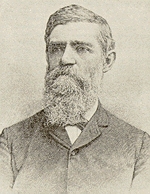Frederick Louis Rowe
1866-1947
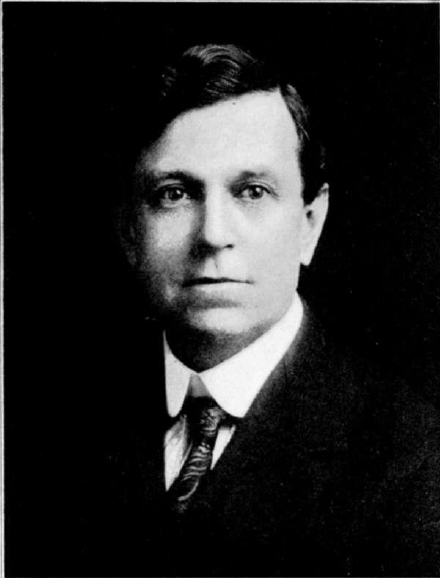
Biographical Sketch On The Life Of F.L. Rowe
No man's life was bound with the Leader more than Fred Rowe. For nearly 60 years Rowe's hand guided the direction taken through the turbulent waters of the times and the competing currents of a complex fellowship.
Frederick Louis Rowe was born in Akron, Ohio on December 27, 1866, the youngest of five children born to John F. and Editha Mary Rowe. His father was of Pennsylvania Dutch background.1 [1 Footnote: The family name rhymes with "how" in a pronunciation that came from their Dutch heritage. - F. L. Rowe, "Next Thing To a Riot," CL 1-26-1926, 9.] Both parents gave Rowe an example of piety and devotion to God, but because of his father's busy preaching schedule, his mother was the biggest influence on Fred Rowe's early life.2 [2 Footnote:F. L. Rowe, "Observations," CL 2-1-1921, 3.] Years later when the burden of carrying the Leader seemed to overwhelm him, Rowe would remember the frequent, encouraging and inspiring words of his mother.3 [3 Footnote: F. L. Rowe, "Observations," CL 2-15-1915, 3] In contrast, Rowe's father seldom praised or complimented his youngest son.4 [4 Footnote: F. L. Rowe, "Observations," CL 10-24-1916, 3]
Rowe attended public schools and spent one year at Buchtel College in Akron. He developed a strong work ethic at an early age. When he was ten he became a news boy for the Akron Daily Beacon. After a year in college, he became Telegraph Editor for the Daily Beacon.5 [5 Footnote: John A. Klingman, "Biographical Sketch of Fred L. Rowe," CL 8-12-1947, 2.]
In 1887, at the age of 21, Fred Rowe moved to Cincinnati to assist his father in managing the Christian Leader. Cincinnati was Fred Rowe's home for the rest of his life. When his father died in 1899, the financial and editorial responsibility of the paper passed to the young son. Though the nature of a religious paper was different, his earlier newspaper experience in Akron proved to be invaluable in his management of the Leader.
Cincinnati was a hard field of labor during Rowe's tenure with the paper. When division split the Restoration ranks, every church in Cincinnati went with the a new order of things, as John Rowe called them.6 [6 Footnote: Earl West, Search for the Ancient Order, vol. 3 (Indianapolis: Religious Book Service, 1979), 196.] Initially, Rowe assembled with the Christian churches rather than worship by himself. But by 1905, this early lack of conviction was replaced by a determination to cast his lot with the churches of Christ. For the next 40 years he called the Withamsville church of Christ his church home and preached for them regularly.7 [7 Footnote: Harold Z. Maddux, "As I Knew Him," CL 8-12-1947, 11.] Rowe also assisted in the re-establishment of the church of Christ in Cincinnati in other ways. His eight month's correspondence with Charles T. Russell resulted in the Russell-White debate being held in downtown Cincinnati's Music Hall, February 23-28, 1908.8 [8 Footnote: Russell-White Debate, (Cincinnati: F. L. Rowe, Publisher, 1908), publisher's announcement, ix.] The subsequent five Sunday meeting by L. S. White resulted in 24 additions to the Church.9 [9 Footnote: West, vol. 3, 196.] When John A. Klingman came to work with the Cincinnati church in 1910, he often turned to Rowe for counsel.
It was my good fortune, while laboring in Cincinnati Mission Field, to be closely associated with Brother Rowe. . . . I spent some of my happiest days, as an evangelist, in my association with Brother Rowe. I went to him with problems concerning my church work, and he often talked with me about the fiery trials of a managing editor of a religious journal.10 [10 Footnote: Klingman, op cit.]
Despite the best efforts of Rowe, Klingman and J. L. Anthony working among Cincinnati's black population, work in the city grew slowly.
As owner and publisher of the Leader, Rowe had many thankless jobs. Following up delinquent subscribers and dealing with creditors were constant plagues. Managing the Leader brought criticisms that Rowe realized kept the paper in the minds of people "every knock was a boost,"11 [11 Footnote: Fred Rowe, "Observations," CL 4-18-1916, 3.] but the accumulative "knocks" through the years took their toll on Rowe's spirit.12 [12 Footnote: Fred Rowe, "Back to Earth," CL 8-16-1938, 5.] As final voice in policy decisions, Rowe also made his share of enemies, especially from those whose submissions to the Leader had been refused.13 [13 Footnote: Fred Rowe, "Observations," CL 3-3-1925, 2-3.] J. H. Pennell defended Rowe as he shared an inside look at the Leader publisher's weekly chore:
. . . brethren, if you were to look over the copy from which he is supposed to make up the paper you would wonder how he ever gets out the good paper that he does. Stuff is mailed to him with a "demand" that it be given a place in the Leader, that would destroy any paper bearing the name Christian, and sow discord and strife among the brethren. Brother Rowe deserves much credit for getting out the good paper that he does when you consider the material he has to make it out of.14 [14 Footnote: J. H. Pennell, "Field Reports," CL 9-1-1914, 13.]
As an individual Rowe was noted for his
generosity. He helped many a young preacher build their
library, selling books at bargain prices or over time.15 [15 Footnote: A.
E. Wickham, "To A Bereaved Brotherhood," CL 8-12-1947, 6.] John Nosker paid this tribute to Rowe:
AIt was once remarked that he
would spend three cents to thank a brother for five cents worth
of business.16 [16Footnote: John
L. Nosker, CL 8-12-1947, 6.]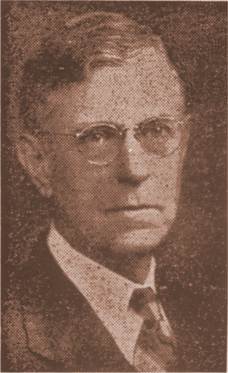
Along with his generosity, Rowe was remembered for his love for music and singing. The soft-spoken Rowe had a strong tenor voice which he used for leading singing. He was a charter member in the Cincinnati Orpheus Club, a civic choir of one hundred male voices.17 [17 Footnote: Klingman, op cit., 6. ]
Less known, but noteworthy for the insight into Rowe's character was the fact that he was an agent for the Society for the suppression of Vice. Rowe would often give expert testimony for the government in cases against individuals who were using the postal system for pornographic purposes.18 [18 Footnote: Fred Rowe, "A Quick Trip," CL 5-24-1921, 8.]
In addition to his work with the Leader and regular preaching appointments at Withamsville, Rowe served on the board of Directors for both the Potter Orphans' home and the Tennessee Orphans' home.19 [19 Footnote: Ibid. Rowe served on the board for Potter's home from it's very beginning in 1914.] He often made appeal for their support through his columns in the reader.20 [20 Footnote: Fred Rowe, "Do You Love Children?," CL 5-2-1933, 9.] Rowe would spend July 4th of every year at Potter's. Annual reports from Potter's and regular updates on the orphans found space in the Leader.
No worthy missionary in the period had a greater friend than Fred Rowe. The mission reports of nearly every single missionary supported by churches of Christ found their way to the Christian Leader. Rowe not only kept his readers informed of missionaries and their needs, but he used the Leader office as a receiving center for any reader who wanted to send funds to missionaries. This arrangement brought criticism from some who called him a "one man missionary society," but he gladly bore the brunt of those criticisms as well as the expenses involved in forwarding funds to missionaries.21 [21 Footnote: C. G. Vincent, "Tributes to Brother Rowe," CL 8-12-1947, 10.] Rowe sent the Leader free of charge to every missionary in the field. Combined with the financial costs in printing one to three pages of the Leader each week for mission reports or articles by missionaries, this averaged out to about $1500 a year in Leader printing costs for the service of mission work.22 [22 Footnote: Fred Rowe, "Will Let Our Readers Answer," CL 3-11-1930, 8.]
Rowe's most enduring legacy may have been his book publishing business. From the office on Elm Street, F. L. Rowe Publishing produced approximately 50 books, several hymnals, and assorted booklets and tracts.23 [23 Footnote: Klingman, op cit.] Among the books published by Rowe were the first five years of the Abilene Christian College lectures in three volumes.24 [24 Footnote: William S. Banowsky, The Mirror of a Movement, (Dallas: Christian Publishing Company, 1965), 67.] Along with John Klingman, Rowe co-authored The Bible in Questions and Answers in 1916. This 600 page book was a compilation drawn from the various works of McGarvey, Lipscomb, Milligan and other conservative commentators. It contained over 30,000 questions and answers covering all 66 books of the Bible as well as doctrine and geography. It was designed to be used in Bible class settings. Rowe also compiled Letters to an Orphan, Gleanings for Young Folks, and Duties and Beauties of Life, a book of prose and poetry.25 [25Footnote: Klingman, 2.]
Rowe especially believed that it was important for him as a publisher to re-issue Restoration writings. He said: "The younger generation of the great household of faith have little knowledge of the vast amount of literature that has been left to them by the pioneers of the Restoration.26 [26 Footnote: F. L. Rowe, "Preface to the Present Edition," in J. W. Monser, Types and Metaphors of the Bible, (Cincinnati: F. L. Rowe Publishing, 1936 reprint), 1.]
He went on to declare that "valuable literature has been lost to the service of a growing but careless brotherhood." Rowe aimed to offset that carelessness but lamented his lack of funds for reprinting needs.27 [27 Footnote: F. L. Rowe, "More New Writers," CL 12-29-1931, 7.] Among the Restoration works that Rowe managed to publish was Pioneer Sermons, a three hundred page book preserving sermons by Stone, the Campbells, Walter Scott, J. M. Mathes, and others.28 [28. Footnote: Description of the book in advertising, CL 10-22-1929, 18.]
Immersing himself in a lifetime of service to others may have been Rowe's way of hiding disappointments in his private life. Rowe had been married but it ended in an ugly divorce.29 [29 Footnote: Nancy Maddux Walters, "Memories of Frederick L. Rowe," letter to Bruce Daugherty, November 8, 2003.] Any resemblance of a normal family life for Rowe came through the lives of the brethren in Withamsville.30 30 Footnote: Nancy Maddux Walters and Lyman Smith, interview by Bruce Daugherty, 2-27-2004. The Maddux, Smith and Butt families all hosted Rowe on his Sundays at Withamsville. Among the fond memories shared were Sunday afternoons Rowe spent reading to children or singing with family members.]
The failure of his married life along with his inability to find the right buyers for the Leader left Fred Rowe lonely, poor, and bitter in his last years.31 [31 Footnote: Diary of Harold Z. Maddux, 10-21-1945.] A variety of health problems added to his difficulties in preaching and managing the paper. In 1946 Rowe gave up control of the Leader to Doward Anguish of Dresden, Ohio.32 [32Footnote: Fred Rowe, "F. L. R.'s Notes," CL 2-12-1946, 10.] Fred Rowe passed away on Monday, August 12, 1947. He died from complications following a broken leg suffered in a fall while visiting his old friend T. Q. Martin.
Though Fred Rowe may have had some serious character flaws, nevertheless he had built a strong, conservative, editorial staff favoring Christian benevolence, education and mission work, who produced a paper with a widespread appeal that went beyond its sectional base.
![]()
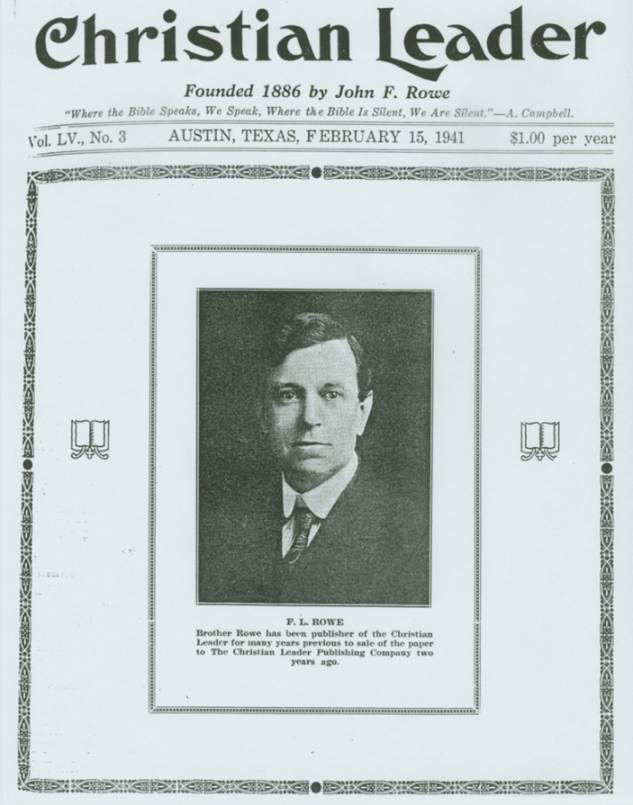
F.L. Rowe
Brother Rowe has been publisher of the Christian
Leader for many years previous to sale of the paper
the Christian Leader Publishing Company two years ago.
![]()


Letterhead & Signature of F.L. Rowe
Courtesy of Terry J. Gardner, 04.2010
![]()
Directions To The Grave of F.L. Rowe
Frederick L. Rowe is buried in the southeast part of Cincinnati, Ohio. Take I-275 east or south, depending on the signs. Get off at the Amelia exit # 65. Turn left on state route 125 (Ohio Pike). Stay in the left lane and proceed a quarter of a mile to turn left on Britton Blvd. There is a stop light there. Walgreens is on the right. You will also have passed Withamsville-Tobasco School on the right. Then, immediately left on Mount Moriah Drive. Mt Moriah Cemetery is on the right side of the road. If you go in the first gate, proceed straight to the rear of the cemetery. Turn left. F. L. Rowe's gravesite is on the right almost to the fence at the rear of the cemetery, not directly ahead but a short distance to the left. There is an office on the cemetery grounds who would be happy to assist you locate the site.
Mt. Moriah Cemetery
686 Mount Moriah Dr
Cincinnati, OH 45245
(513) 752-1773
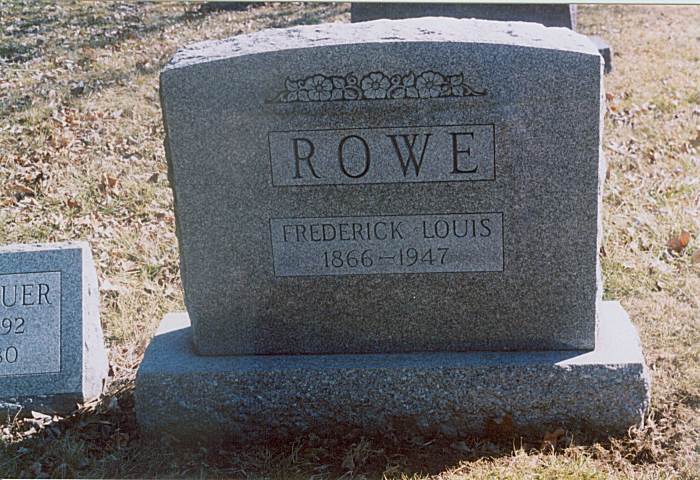
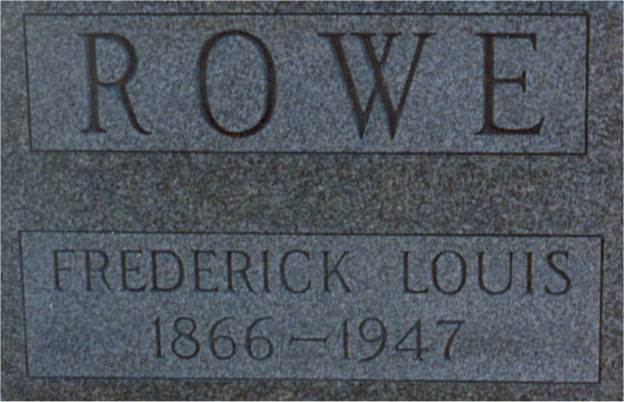
![]()
Acknowledgement
Special thanks are extended to Bruce Daugherty, minister for the Church of Christ in Cambridge, Ohio for the information provided on this site. The research paper, Fred L. Rowe, Owner And Publisher, above as well as pictures of the grave and directions are the result of his long and time-consuming research. See the other site he helped us on, Flavil J. Hall.
![]()
